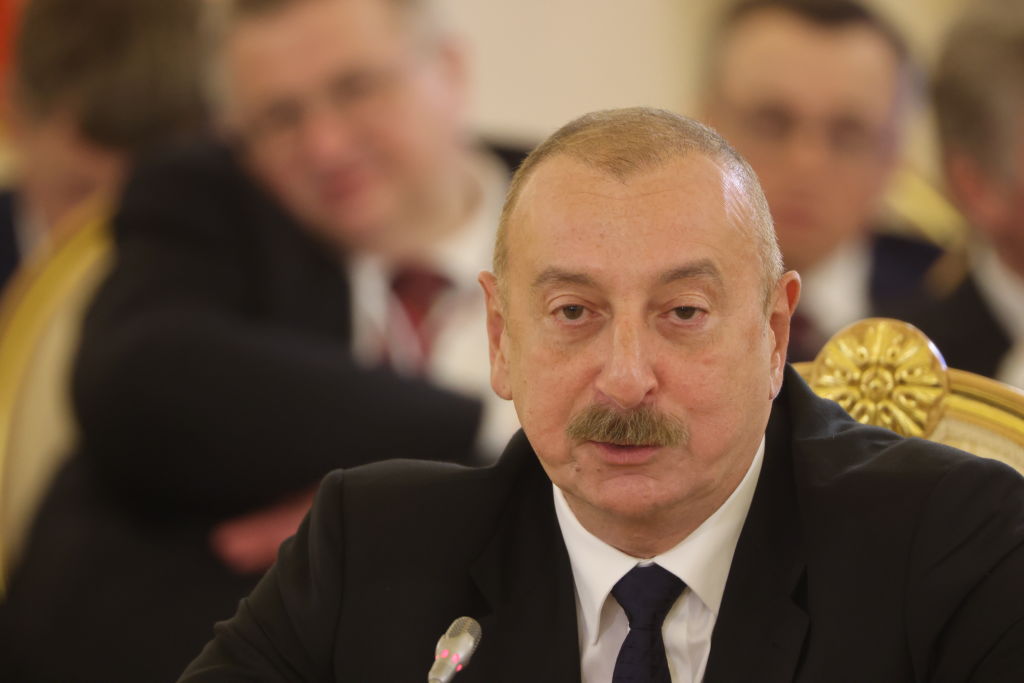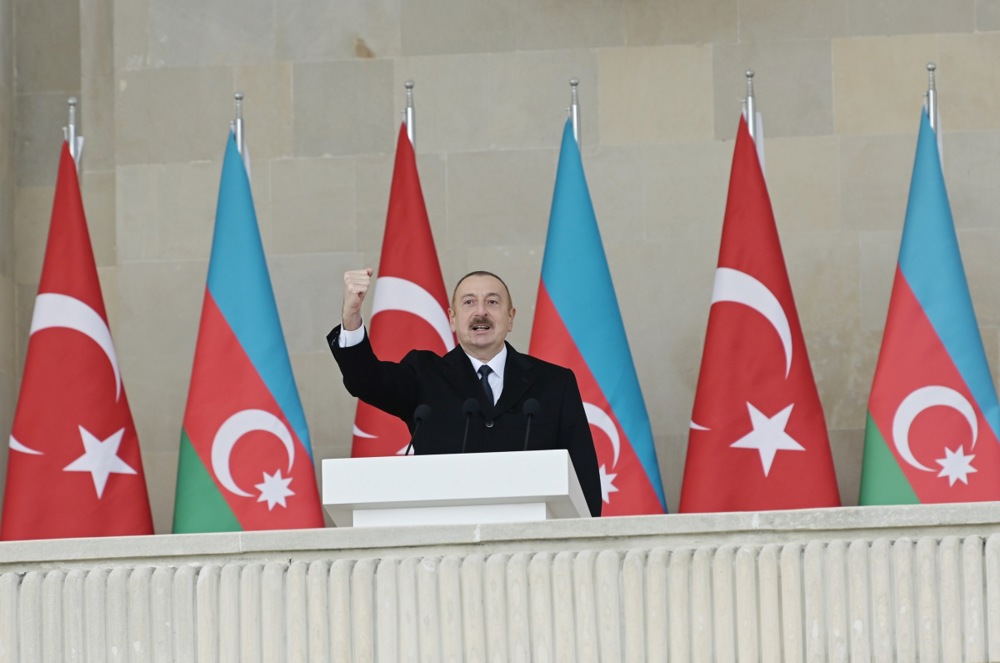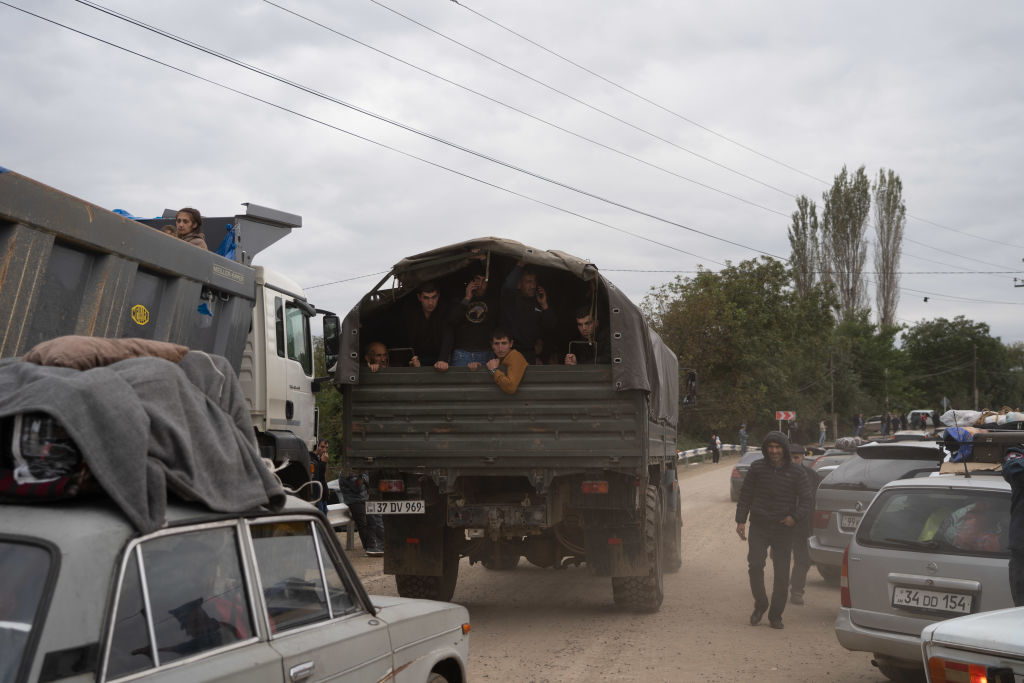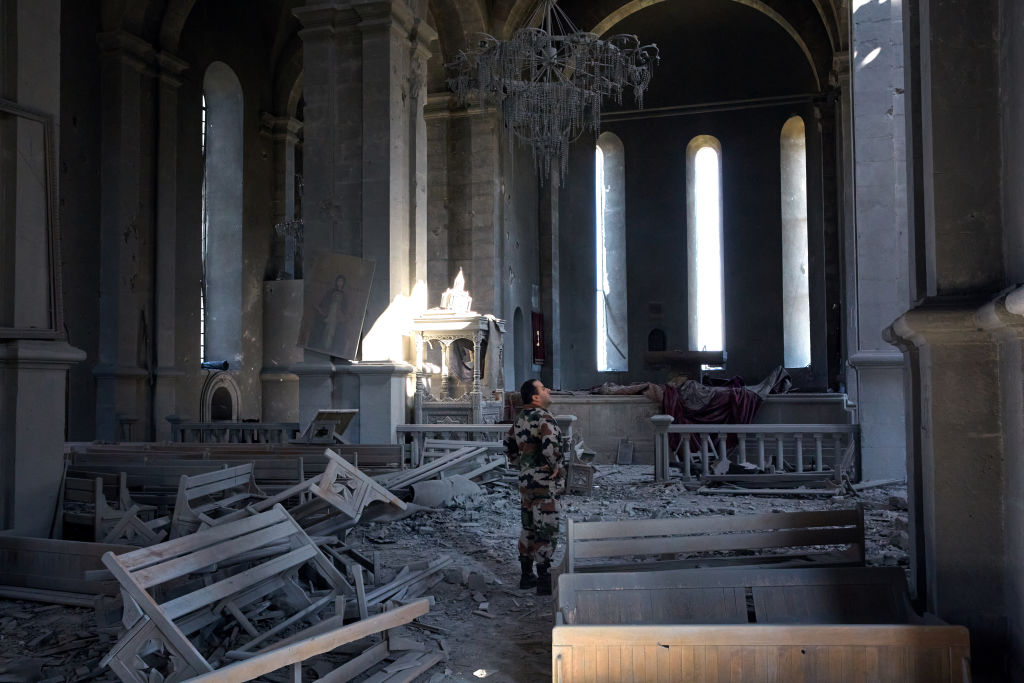The Armenian Ambassador to the European Union has rejected claims that Nagorno-Karabakh Armenians have no reason to fear the Azerbaijani occupation.
Contradicting statements by Azerbaijani officials, Ambassador Tigran Balayan told Brussels Signal that Azerbaijani forces are committing “mass atrocities and war crimes”.
Claims of a relatively peaceful takeover were “complete nonsense and blatant lie[s]”, Balayan said.
Azerbaijan last week forced the capitulation of the of the Nagorno-Karabakh Armenians who resided in the unrecognised Armenia-backed Republic of Artsakh.
During a press conference at the Azerbaijani Embassy on September 26, Hikmet Hajiyev, a foreign policy advisor to President Ilham Aliyev, told journalists that his government was doing its utmost to ease the humanitarian situation of Karabakh Armenians. He also said that Azerbaijani forces had been meticulous in avoiding civilian casualties and collateral damage.
A senior Azerbaijani official claimed his nation’s capture of ethnic-Armenian Nagorno-Karabakh will ultimately be for the good of the region. https://t.co/B7D8utH1RN
— Brussels Signal (@brusselssignal) September 27, 2023
The Armenian Ambassador gave figures for Azerbaijan’s 24-hour military operation, which led to the capitulation of the Nagorno-Karabakh enclave.
“Nagorno-Karabakh has at least 300 deaths, including 10 civilians (5 children), more than 400 injured, including 40 civilians (13 children),” Balayan wrote. These figures are close to those given by the Azerbaijani ambassador Vaqif Sadıqov to Brussels Signal.
“Show me any country in the world where their ratio of military casualties versus civilian is lower than that,” said Sadıqov.
Balayan claimed that civilian casualties were deliberate. The “genocidal Aliyev regime resorted to use of force and started a campaign of ethnic cleansing, with exactly the same pattern as in Srebrenica”, he said.
“During the aggression, mass atrocities and war crimes were committed even against civilians, children, and women. Azerbaijan was deliberately targeting civilian infrastructure, its soldiers murdering civilians in cold blood.”
He also claimed that Azerbaijani telegram channels were “posting photos of missing Armenian women and children from Nagorno-Karabakh, and calling for violence, rape, beheadings and promising rewards for them and for videos with atrocities”.
While there was no confirmation of these claims, videos have been posted to X allegedly showing Azerbaijani troops firing on Armenian homes and looting them. Other videos, reposted from Tiktok, appear to show footage of Azerbaijani forces demolishing Armenian homes.
Azeri forces demolishing Armenian homes in #MetsTaher village #Artsakh.
Despite the obligation for the safe return of forcibly displaced persons & refugees to Artsakh, #Baku is erasing Armenian heritage by destroying homes, as captured on video. #Azerbaijan #Azeriwarcrimes pic.twitter.com/FoOr8omG7J— Maro Kochinyan (@MaroKochinyan) April 17, 2023
The Azerbaijani officials blamed Western perceptions of genocide in Nagorno-Karabakh on disinformation spread online by the Armenian side.
Many, including the EU, have called for international observers to enter the region. While Hajiyev told Brussels Signal that Baku was in contact with the regional United Nations office, no confirmation has been received that the Azerbaijani Government approved monitoring missions.
As of writing, Reuters reports that nearly 70,000 ethnic Armenians have fled from Nagorno-Karabakh, more than half the reported 120,000 population.
While Azerbaijan officials told the Brussels press that they fully intend to offer civil and minority rights to the Armenians, the Armenians claim the mass exodus is unsurprising given the recent history.
After the Armenian enclave experienced a nine-month blockade, which left residents “without access to anything from bread to medicines”, Ambassador Balayan said the Azerbaijani Government had effectively “starv[ed] them to subjugation”.
For Balayan, too, there was a personal dimension.
“Me too, I have lost my home, village and the possibility to visit the graves of my grandparents”.





